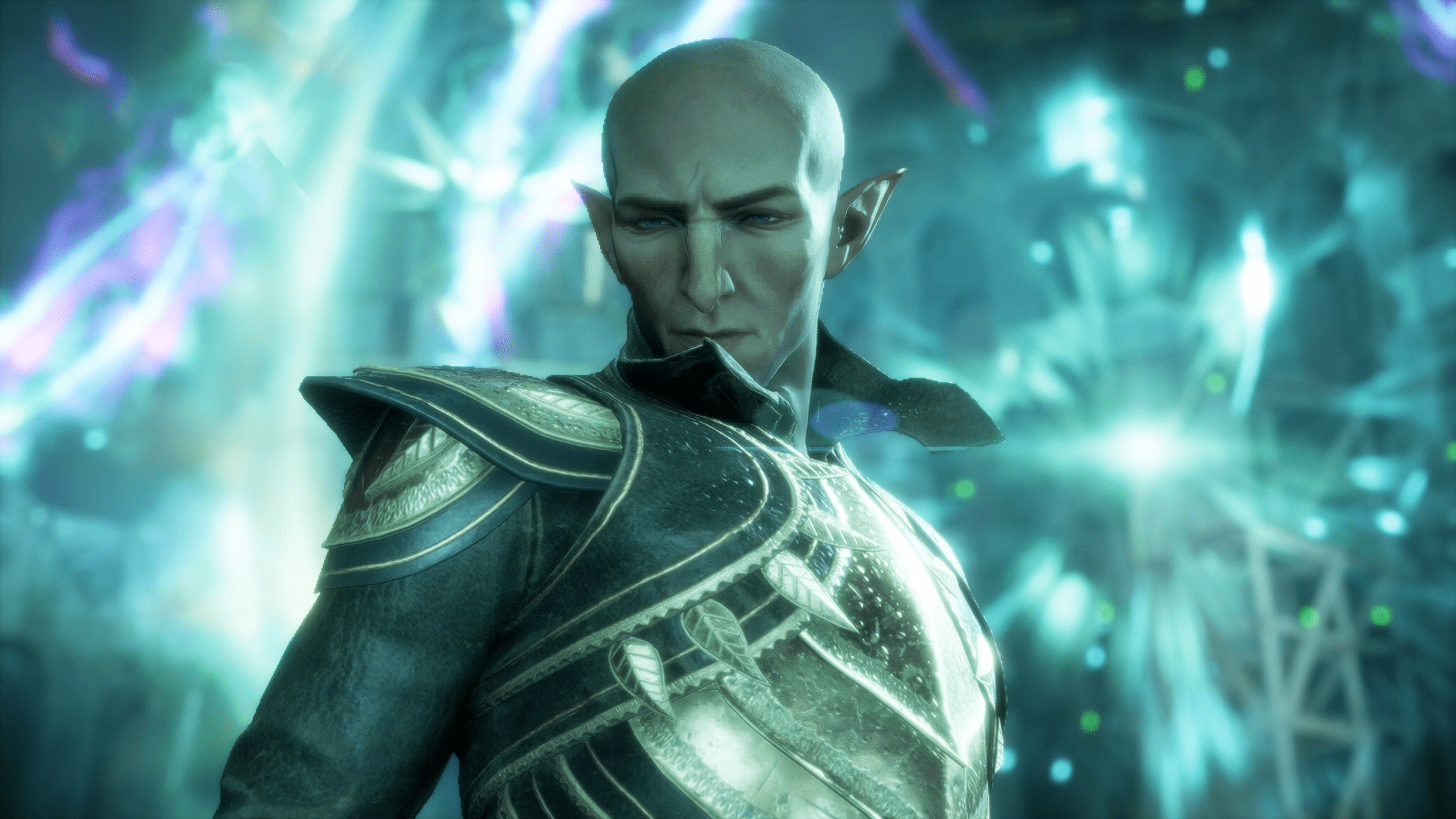
Dragon Age: The Veilguard is a sprawling RPG about battling imprisoned ancient gods, preventing all-out war between various factions and dimensions, and… kissing elves. Or dwarves. Or necromancers. To say it’s complicated is an understatement.
From character creation to navigation to combat, here are 14 things you should know before starting Dragon Age: The Veilguard.
Think carefully when creating a new character
When creating a character in Dragon Age: The Veilguard, you’ll make a number of decisions you can’t change later.
You’ll choose a lineage (human, elf, Qunari, or dwarf). You’ll choose a class (mage, rogue, or warrior). You’ll align yourself with one of six factions (the Grey Wardens, Mourn Watch, Shadow Dragons, Antivan Crows, Lords of Fortune, or Veil Jumpers). Lastly, you’ll have the chance to tinker with the “world state,” which allows you to match whatever narrative outcomes you ended up with in your Dragon Age: Inquisition playthrough (but, frankly, those choices are mere set dressing).
You’ll be able to change your appearance later, save for the base lineage you choose — all elves have pointy ears, for instance. But for the rest of these choices, you’re locked in once you finalize your character. Before committing to a character build, consult our guides on what class to choose and the best faction to pick.
Environments are more linear than you’d think (at least at first)
You’ll be led by the nose (if the nose is a sparkling blue waypoint) through a lot of Dragon Age: The Veilguard and initially won’t have to make many choices about where to go or what to do next. Veilguard has a great pathfinding system that will put waypoints on your HUD, showing you not just where to go but also the most efficient way to get there, ensuring you don’t miss anything.
Don’t ignore your map

Your maps will show you the location of nearby chests and stat-boosting Fen’Harel statues. Yellow exclamation marks indicate new side quests. And when you’re at the Lighthouse, your base of operations, you’ll occasionally see little clock symbols associated with your companions — these indicate character-driven conversations that can expire if you don’t seek them out before leaving the Lighthouse.
Watch for side doors and dead ends, too. There’s almost always some treasure to be found just by going the wrong way.
You’ll come back to that spot later, we promise
The linear nature of the early game doesn’t mean you’ll visit a location once and then be done with them. New sections of the world will unlock as you progress the story, and the game gives you plenty of reasons to return to areas you’ve already explored — chests to unlock, side quests to activate, merchants to buy from. It’s noted in your journal that several quests and side quests can and should be prioritized or left for later — “This area will unlock later on during the team’s travels,” the quests read.
You’ll sometimes come across chests that you can see but not reach. If you can’t solve (or figure out how to solve) a puzzle associated with a chest, save it for later. You might be missing a traversal ability, or you might need to complete a specific side quest first.
Dialogue icons summarize your response
While there’s a little ambiguity in how your character will deliver a line of dialogue, the symbol in the middle of the dialogue wheel hints at the emotion that dialogue conveys. Selecting the three exclamation marks causes your character to say something panicked; the crying eye prompts an empathetic response; the knight with crossed arms means you’ll respond confidently (and sometimes rudely); the jester mask means you’ll say something witty or snarky; and the thumbs-up plays on the typical straight-laced action hero response.
There’s no morality system underpinning any dialogue, as you may expect if you’ve played one of BioWare’s previous games. Unless there’s a red heart sign, the universal RPG symbol for “flirt” (yes, there’s romance in Veilguard), these choices are purely a role-playing exercise.
Give all of your companions some airtime

You’ll recruit seven companions to your party, ultimately assembling the titular Veilguard. You can chat and, yes, flirt with all seven. Each party member has a dedicated companion quest chain, and you can bring two party members at a time with you for (most) regular missions and side quests. As you complete missions with a party member, you’ll increase your bond with them, allowing you to level-up their skills.
Instead of focusing on two or three favorite companions, regularly shift between all seven. Without spoiling anything, the higher your bonds are across your entire party, the better prepared you’ll be for the final mission. And who knows? Along the way, you might end up warming to those you initially bristled at (not naming any names, Bellara).
For a detailed list of all party members and when you get them, see our guide on Veilguard’s companions.
You can liberally save-scum
A BioWare game isn’t a BioWare game if it doesn’t present you with lots of choices — and lots of opportunities to screw up. You can juggle up to 100 manual saves in Veilguard, and that’s in addition to a very generous autosave system. The handy “temporary decision save” additionally triggers an autosave whenever you make a pivotal decision. If you’re unhappy with any choice you make, you’ll have ample options to revert back to an earlier save state.
There’s no inventory limit
Hail the RPG gods. If you see it, pick it up!
Don’t sell your valuables to just anyone
You can’t sell your equipment or crafting materials, but pretty much anything else you pick up is marked as a “valuable” that can be sold off.
Selling all of your valuables to the first merchant you see might get you a lot of gold, but selling your valuables to a vendor increases your reputation with that vendor’s faction. You can see your standing with a faction from the world map in a sidebar on the left. If you’re looking to build relations with a specific group, you might want to hold onto your valuables until you come across that faction’s vendor.
Buy mementos

Once you meet the Lighthouse’s Caretaker, you’ll unlock Veilguard’s upgrade system. How far you can upgrade (and eventually enchant) your team’s gear depends on the Caretaker’s level which is increased by mementos. These are the items with the blue diamond-and-hand icon.
There’s a tactical menu in combat
The Ability Wheel (RB/R1 or tab on a keyboard) pulls up a wheel that lets you direct your allies in their attacks and lets you choose from your and their skills (along with the order they happen in). Time is paused while you have the wheel open. As you get more comfortable and confident in combat, you can also use LT/L1 or left CTRL to pull up a mini version of the wheel that does not pause time.
Apply + detonate = boom

Your companions are capable fighters in their own right, but they all have a couple of abilities that work even better when paired with someone else’s. Some skills either apply or detonate an effect — Overwhelm, Staggered, or Weakened — and in order to put those effects into play, you need to first apply them, then detonate them. Just make sure you select them from the action wheel in the correct order.
Fights in Dragon Age: The Veilguard are kind of easy until they’re not anymore. Like, at all. Figure out the best combos of primer and detonation for both your skills and your companions to give yourself a huge edge in fights. For a detailed look at all skills that have this effect, see our guide to all apply and detonate combos.
Respec often

While you can’t change your class, you can change how your skill points are distributed. Skill points unlock a lot of incremental changes to your stats and damage, but they also unlock new abilities and specializations within your class. And you can respec those skills for free as often as you like.
In the Skills menu, hovering over a node that you’ve spent a skill point on will give you the option to refund that point, letting you rearrange your skill points one at a time. Or you can refund all of your skill points with the triangle/Y button or F on a keyboard.
Stuck on something? You can seriously customize the difficulty
Dragon Age: The Veilguard features an impressively robust suite of difficulty settings. Yes, there are your standard easy-medium-hard options. (“Adventurer” is the default.) But beyond that, you can tweak nearly any component of combat and navigation.
You can play with enemy health and damage levels, plus their resistances and vulnerabilities. If you prefer more natural wayfinding, you can tweak how long waypoints stay visible on screen, and can even change the visibility of objects, like chests, in your field of view. Play around in the Gameplay and Interface menus to fine-tune to your liking.
For more Dragon Age: The Veilguard guides, see our guides on the best class to pick and the best faction to join, plus explainers on how to change appearance, how to romance characters, and how to start companion quests.
Source:https://www.polygon.com/dragon-age-veilguard-guides/472235/beginners-tips-tricks-before-starting





